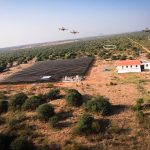
Drones are now commonly used in defence, surveillance, and other activities. A foreign or unidentified drone could potentially breach the security of a protected place or facility. To safeguard such critical airspace and infrastructure, researchers resort to game theory – mathematical modelling of strategic interactions among a set of players, which includes intruders and defenders. A defender can only neutralise a single homogeneous intruder moving with constant speed in a convex territorial space. But inreal life, intruders are more likely to be moving at varying speeds in more than one direction.
Suresh Sundaram and his group in the Department of Aerospace Engineering have now developed a novel approach called DREAM (Dynamic REsource Allocation with decentralised Multi-task assignment).
DREAM can tackle heterogeneous intruders, including sudden intruder pop-ups, and ensures that fewer defenders are utilised against a larger number of intruders.
DREAM is more efficient, simpler, scalable, has a superior success rate, and is better at using resources, compared to existing models. The authors plan to extend DREAM to 3D problems with constrained navigational space in hard-to-observe regions, and apply these ideas to an ongoing anti-drone project for protecting restricted airspace.






